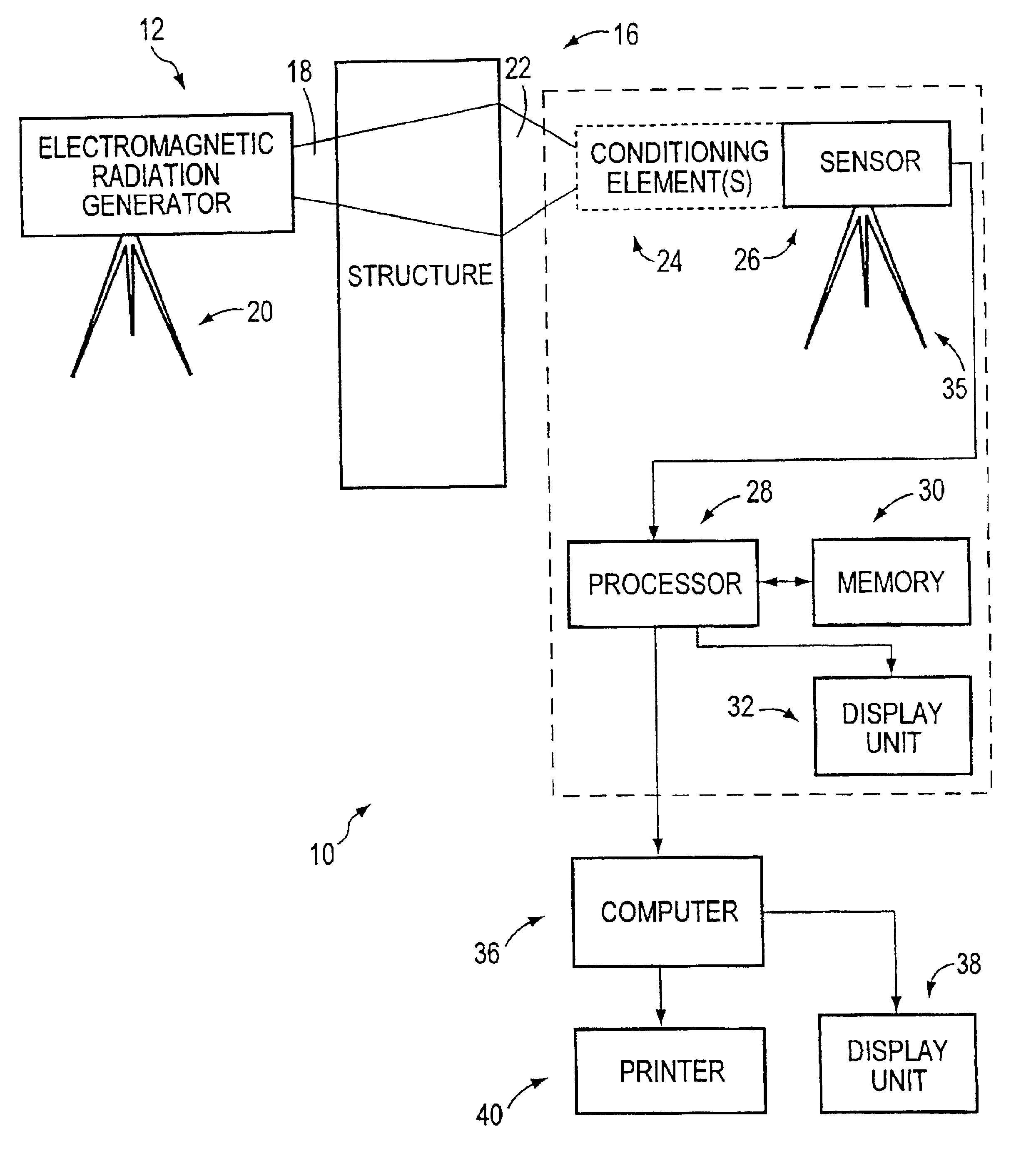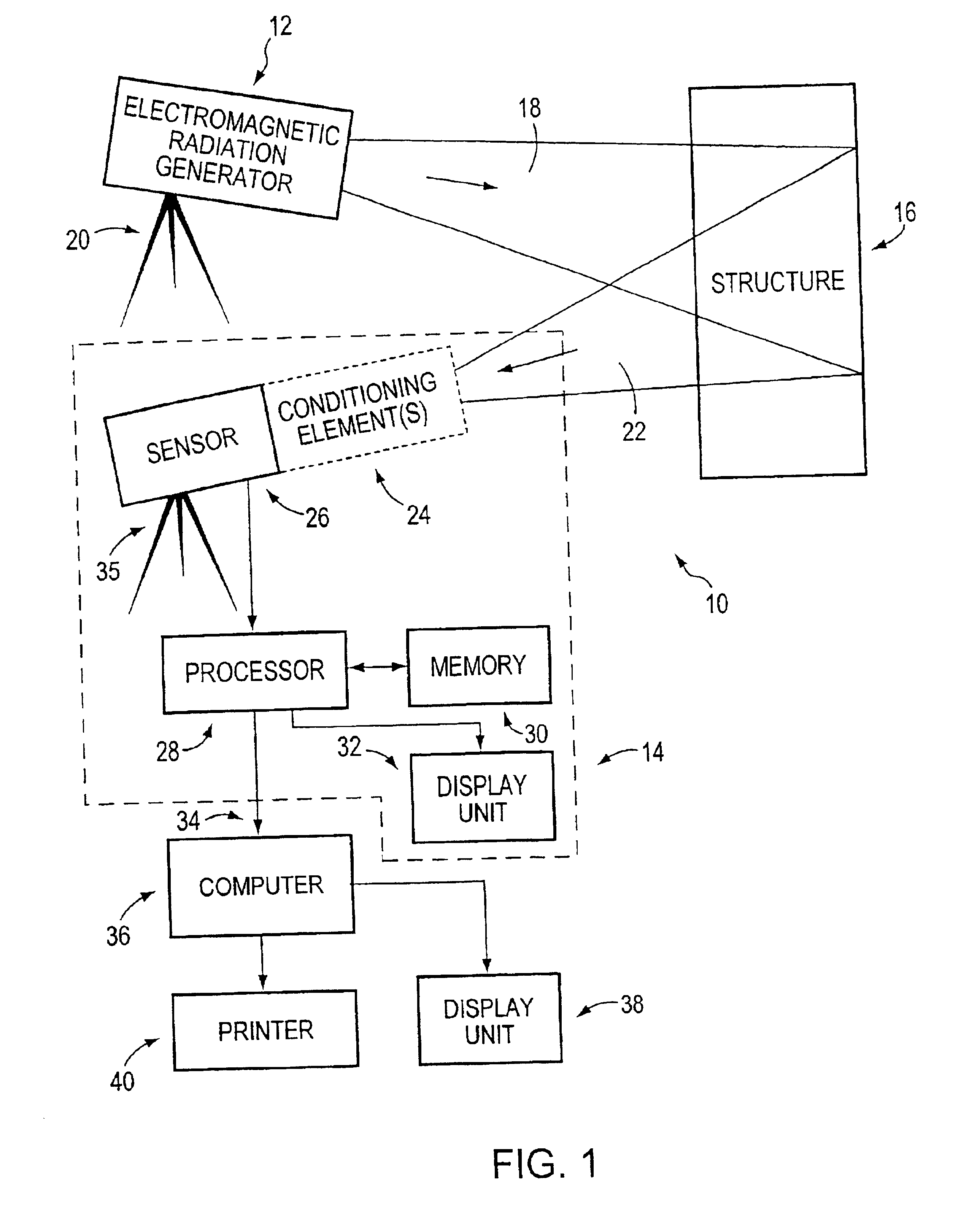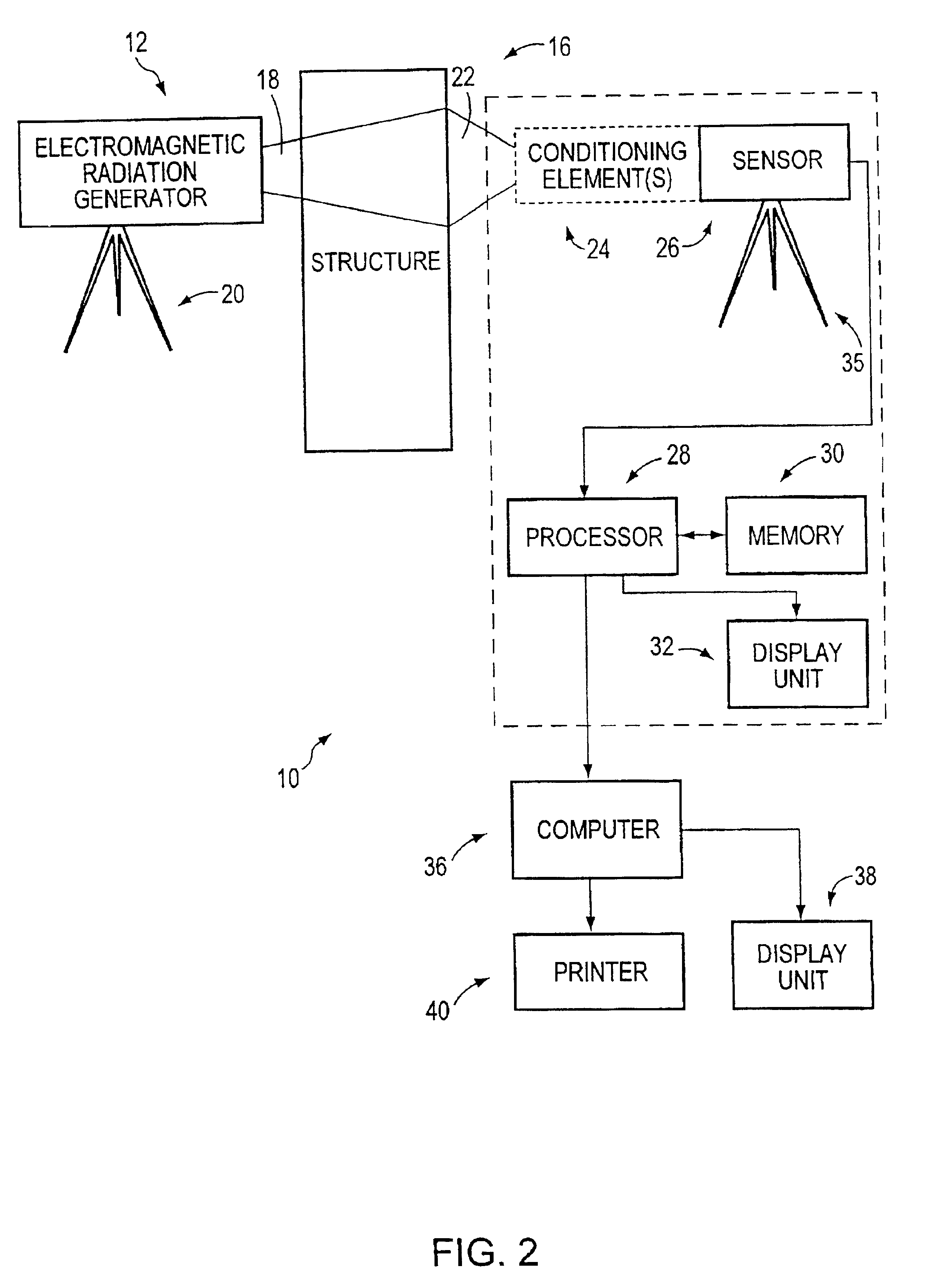Water detection and source identification methods for structures using electromagnetic radiation spectroscopy
a technology of electromagnetic radiation and source identification, applied in the direction of fluid tightness measurement, optical radiation measurement, instruments, etc., can solve the problems of widespread damage, difficult structure detection, and often far more expensive repair work, so as to reduce the likelihood of infestation, effective detection and identification, and rapid
- Summary
- Abstract
- Description
- Claims
- Application Information
AI Technical Summary
Benefits of technology
Problems solved by technology
Method used
Image
Examples
Embodiment Construction
As used herein, the following terms and phrases have the following meanings:
“A radiation wavelength that is significantly absorbed by water” means a radiation wavelength that water absorbs to a degree that can be sensed and distinguished as characteristic of water. As is well understood in the field of spectroscopy, the wavelength significantly absorbed by water is preferred to be at or near the center of a peak or maximum in the absorption spectrum of water.
“A radiation wavelength that is not significantly absorbed by water” means a radiation wavelength at or near the center of a valley or minima in the absorption spectrum of water.
“A radiation wavelength that is significantly absorbed by water vapor” means a radiation wavelength that water vapor absorbs to a degree that can be sensed and distinguished as characteristic of water vapor. The wavelength significantly absorbed by water vapor is preferred to be at or near the center of a peak or maximum wavelength range in the absorptio...
PUM
| Property | Measurement | Unit |
|---|---|---|
| wavelength | aaaaa | aaaaa |
| wavelength | aaaaa | aaaaa |
| wavelength | aaaaa | aaaaa |
Abstract
Description
Claims
Application Information
 Login to View More
Login to View More - R&D
- Intellectual Property
- Life Sciences
- Materials
- Tech Scout
- Unparalleled Data Quality
- Higher Quality Content
- 60% Fewer Hallucinations
Browse by: Latest US Patents, China's latest patents, Technical Efficacy Thesaurus, Application Domain, Technology Topic, Popular Technical Reports.
© 2025 PatSnap. All rights reserved.Legal|Privacy policy|Modern Slavery Act Transparency Statement|Sitemap|About US| Contact US: help@patsnap.com



